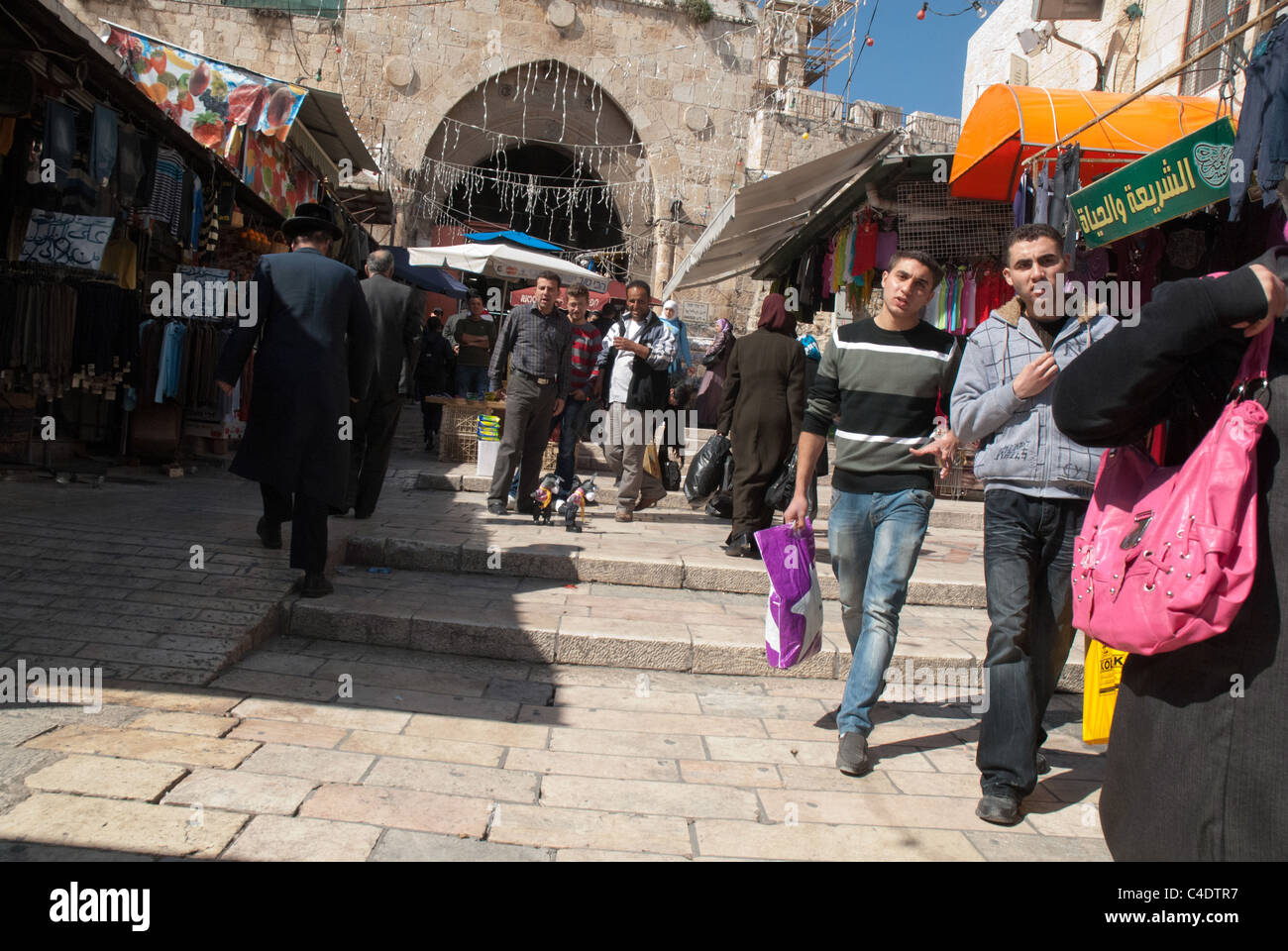Jerusalem is a holy city to the three major Abrahamic religions—Judaism, Christianity and Islam.

Image details
Contributor:
paolo robaudi / Alamy Stock PhotoImage ID:
C4DTR7File size:
50.1 MB (2.3 MB Compressed download)Releases:
Model - no | Property - noDo I need a release?Dimensions:
5116 x 3425 px | 43.3 x 29 cm | 17.1 x 11.4 inches | 300dpiDate taken:
2 March 2011More information:
Jerusalem (Hebrew: יְרוּשָׁלַיִם About this sound (audio) (help·info), Yerushaláyim, ISO 259-3 Yrušalaym, "Abode of Peace"; Arabic: القُدس About this sound (audio) (help·info), al-Quds [al-Sharif], "The Holy Sanctuary")[ii] is the capital of Israel, though not internationally recognized as such.[iii] If the area and population of East Jerusalem is included, it is Israel's largest city[1] in both population and area, [2] with a population of 763, 800 residents over an area of 125.1 km2 (48.3 sq mi).[3][4][iv] Located in the Judean Mountains, between the Mediterranean Sea and the northern edge of the Dead Sea, modern Jerusalem has grown far beyond the boundaries of the Old City. Jerusalem is a holy city to the three major Abrahamic religions—Judaism, Christianity and Islam. In Judaism, Jerusalem has been the holiest city since, according to the Biblical Old Testament, King David of Israel first established it as the capital of the united Kingdom of Israel in c. 1000 BCE, and his son Solomon commissioned the building of the First Temple in the city.[5] In Christianity, Jerusalem has been a holy city since, according to the New Testament, Jesus was crucified in c. 30 CE and 300 years later Saint Helena found the True Cross in the city. In Sunni Islam, Jerusalem is the third-holiest city.[6][7] It became the first Qibla, the focal point for Muslim prayer (Salah) in 610 CE, [8] and, according to Islamic tradition, Muhammad made his Night Journey there ten years later.[9][10] As a result, and despite having an area of only 0.9 square kilometres (0.35 sq mi), [11] the Old City is home to sites of key religious importance, among them the Temple Mount, the Western Wall, the Church of the Holy Sepulchre, the Dome of the Rock and al-Aqsa Mosque. During its long history, Jerusalem has been destroyed twice, besieged 23 times, attacked 52 times, and captured and recaptured 44 times.[12] The oldest part of the city was settled in the 4th millennium BCE, making Jerusalem one of the